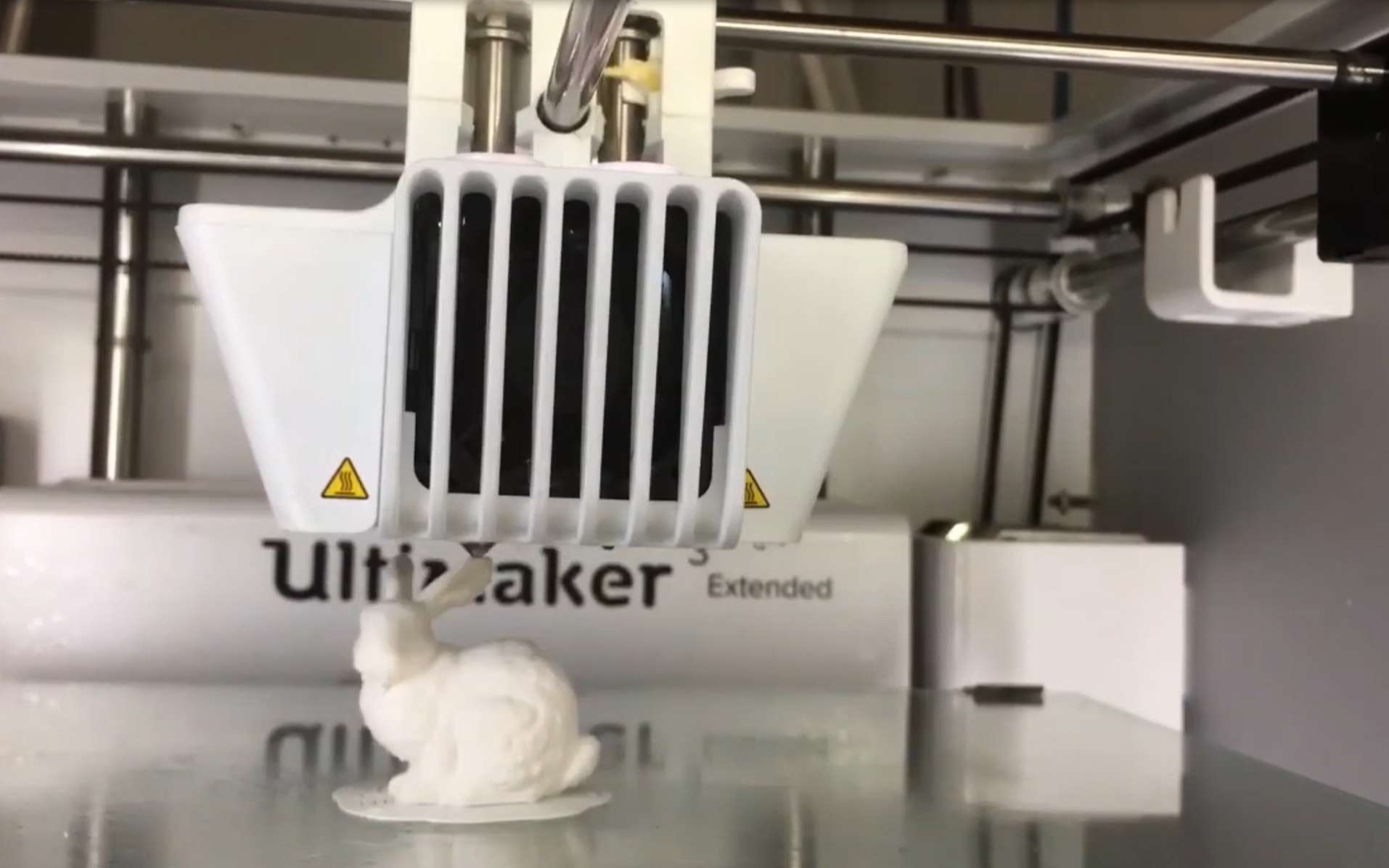Unlike living things, inanimate objects do not have the capacity to reproduce. This little plastic rabbit, however, contains all the instructions necessary for its reprint, stored in strands of DNA inside the filaments. Tomorrow, any everyday object, such as a water bottle, a shirt button or glasses, will be able to hide secret information.
This little 3D printed rabbit looks like an ordinary plastic toy. However, he has the ability to reproduce himself. More precisely, it contains the manufacturing instructions stored in the form of DNA.
A feat achieved thanks to the collaboration between two teams: that of the Israeli researcher in computer sciences Yaniv Erlich, pioneer of DNA storage, and that of Robert Grass, professor in chemistry and applied biosciences at ETH Zürich, at the origin of the invention of glass nanofibers that may contain this DNA.

DNA storage: keep data for millions of years
The DNA storage is a Grail that agitated the scientific world for years. It consists in converting computer bits 0 or 1 to the nitrogenous DNA bases A, C, G and T – adenine , cytosine , guanine and thymine . Theoretically, this method makes it possible to store a billion gigabytes of data in barely 1 mm 3 , or all of the world’s annual computer production in a car trunk.
And above all, to keep them practically for eternity, where the lifespan of a CDdoes not exceed 30 years. In March 2018, Microsoft and the University of Washington announced that they had encoded 200 MB of data on DNA strands and in 2019, the start-up Catalog managed to store the 16 GB of the English version of Wikipedia on DNA.
The problem is that DNA is also very fragile. High temperatures, a change in pH or exposure to UV rays can cause irreparable damage to the molecule. Suffice to say that passing it to the mill of a 3D printer would normally be fatal.
This is where Robert Grass’s invention comes in: the latter developed positively charged glass nanofibers, which agglomerate with the negatively charged DNA strands and form a protective envelope. All that remained was to integrate these nanofibers into the plastic filaments and print the rabbit.